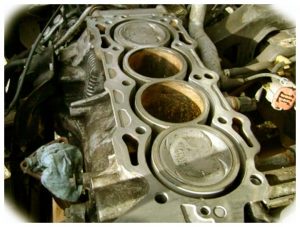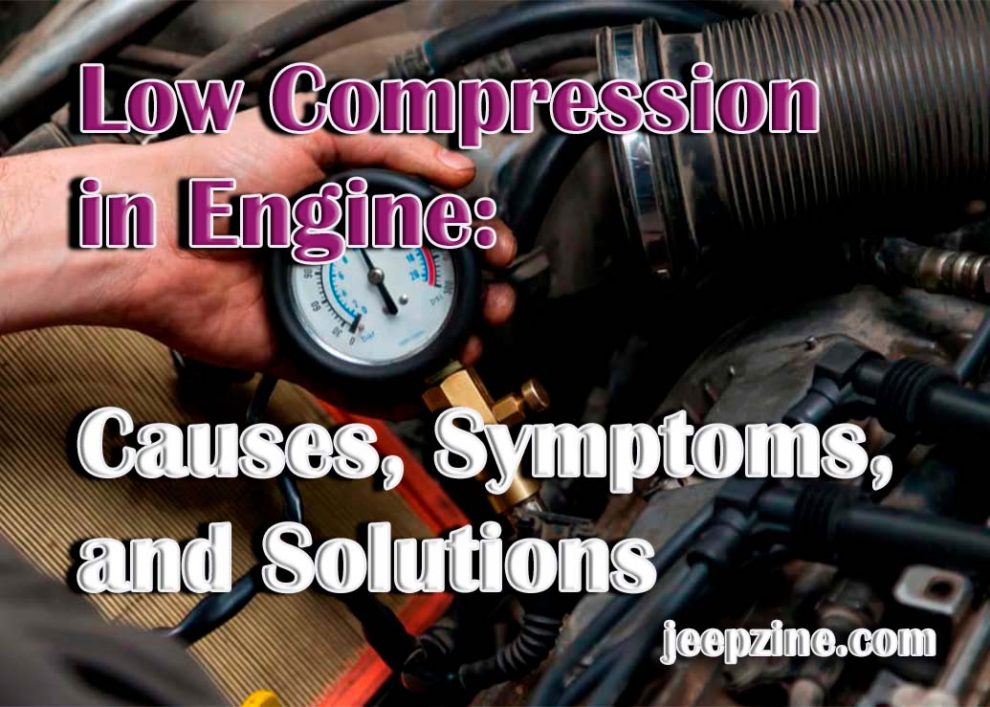Low engine compression can have various causes, from coolant leaks and worn valves and valve seats to piston ring wear or damage, a broken head gasket, or incorrectly adjusted valves. These issues can lead to a decrease in engine efficiency, causing your vehicle’s performance to suffer and increasing the risk of further engine damage. It is important to recognize the symptoms of low compression in your engine, diagnose the cause and take the necessary steps to repair it.
Causes of Low Compression in an Engine
Coolant Leaks: Coolant leaks can cause low compression due to water entering the cylinders from a faulty head gasket or other coolant passage leak. This will reduce combustion efficiency, leading to loss of power and acceleration and poor fuel economy.
Worn Valve Seats or Valves: Worn valve seats/valves can cause loss of compression due to improper valve sealing, which leads to exhaust gases entering the cylinders during intake strokes resulting in poor performance and decreased fuel economy.

Piston Ring Wear or Damage: Piston rings are responsible for sealing the combustion chamber and preventing the leaking of gases and oil between the cylinder walls and pistons. Wear or damage to the piston rings will result in loss of compression, engine misfires, and poor fuel economy.
Broken Head Gasket: A broken head gasket can cause a coolant leak which can lead to low compression due to water entering the cylinders during combustion, resulting in decreased performance.
Incorrectly Adjusted Valves: Incorrectly adjusted valves can cause low compression by preventing proper valve sealing resulting in exhaust gases entering the cylinders during intake strokes resulting in poor performance and decreased fuel economy.
Symptoms of Low Compression in Engine
Difficult engine starting: Difficulty starting your engine is one symptom that could indicate low compression, especially if it takes more than two attempts to start up correctly.
Loss of power or acceleration: If your vehicle is losing power or acceleration despite having sufficient gas, then you may have an issue with low compression causing a decrease in combustion efficiency, leading to decreased power and acceleration.
Engine misfires: If your engine is misfiring or running rough, then it could be caused by low compression resulting in poor combustion efficiency and a decrease in engine performance.
Poor fuel economy: If you notice that your vehicle is consuming more fuel than usual, then it could indicate low compression causing decreased combustion efficiency and increased fuel consumption.
Excessive oil consumption: Low compression can cause excessive oil consumption as the piston rings will not be able to seal properly, leading to the leaking of oil into the cylinders resulting in increased oil consumption.
Engine knocking or pinging: Low compression can cause engine knocking or pinging due to incomplete combustion resulting from inadequate cylinder sealing, leading to inefficient performance and decreased power output.
Diagnosis of Low Compression Issues in an Engine
To diagnose low compression issues, a compression test should be performed on all cylinders using a pressure gauge attached directly to each cylinder after cranking the engine for several seconds until a stable reading is obtained for each cylinder. This will allow you to identify which cylinders have lower than normal readings indicating issues with those cylinders that need further investigation, such as leakage or worn components. A leak-down test can also be performed to identify where the leakage is coming from by pressurizing the cylinders with compressed air and listening for any leaks at different points of the engine.
Solutions for Low Compression in Engine

Replacing Damaged or Worn Pistons or Rings: If piston rings are found to be damaged or worn, they should be replaced in order to restore proper sealing of the combustion chamber and prevent leaking of oil into the cylinders as well as restore adequate compression levels.
Resurfacing the Cylinder Heads: If cylinder heads are found to have warped due to overheating, they should be resurfaced to restore their flatness and prevent leaking of gases or oil between them and the pistons leading to improved engine performance.
Replacing Bad Valves or Seats: If valves or valve seats are found to be damaged or worn, they should be replaced with new ones to ensure that proper sealing of the cylinders is restored leading to improved engine performance and fuel economy.
Conclusion
Low compression in an engine can have various causes, leading to decreased engine performance, poor fuel economy and increased risk of damage. It is important to recognize the symptoms of low compression, diagnose the cause and take the necessary steps to repair it. Solutions for low compression include replacing head gaskets, replacing damaged or worn pistons or rings, resurfacing cylinder heads, and replacing bad valves or seats. Proper diagnosis and timely repairs can restore your engine’s performance without compromising its longevity.


Add Comment